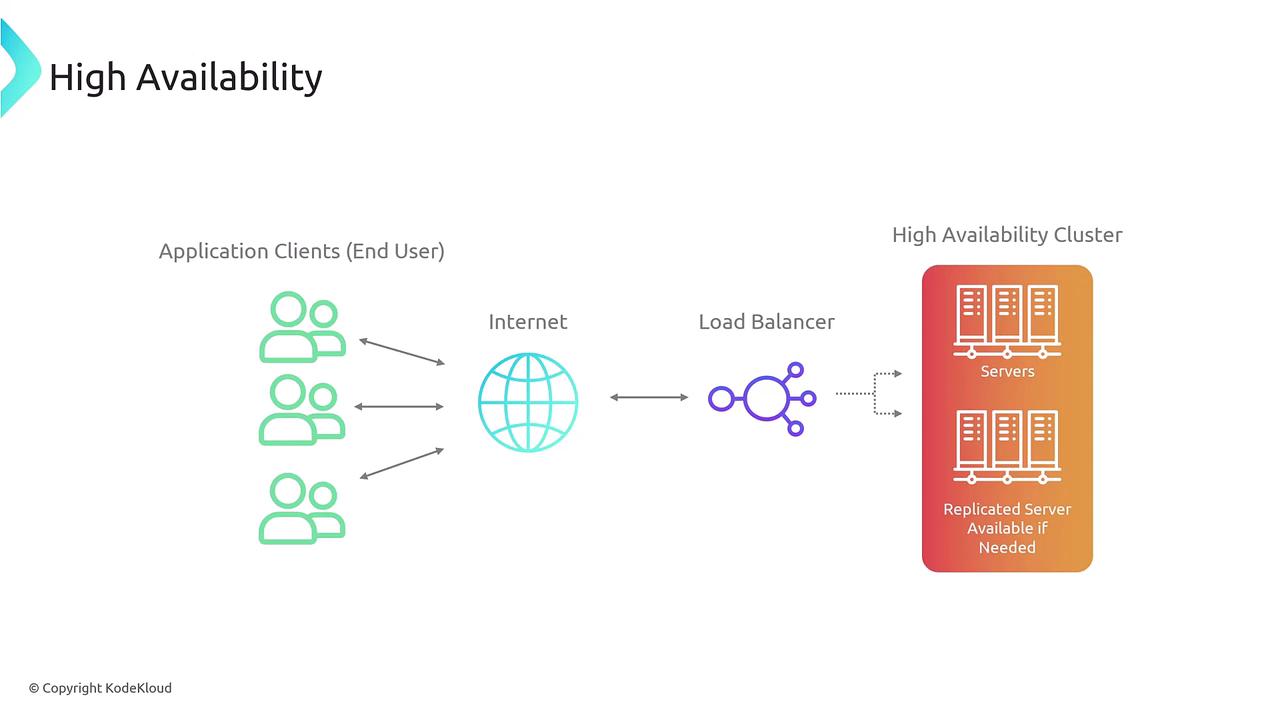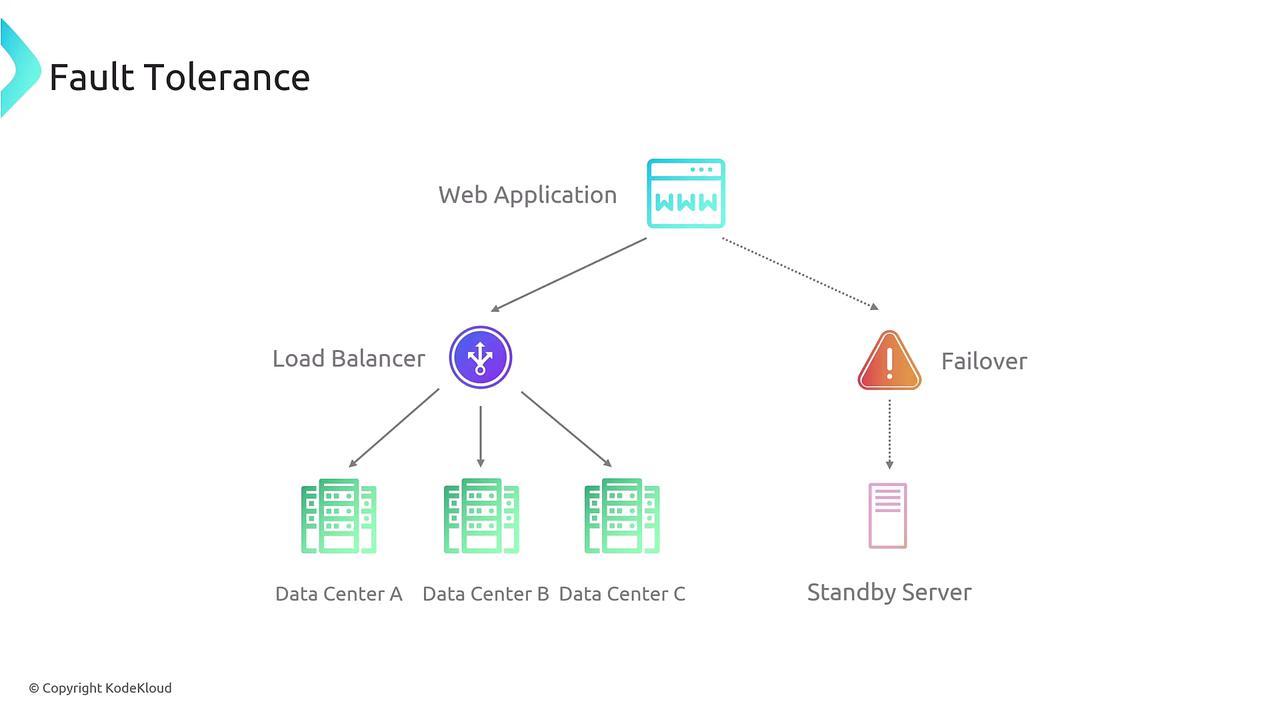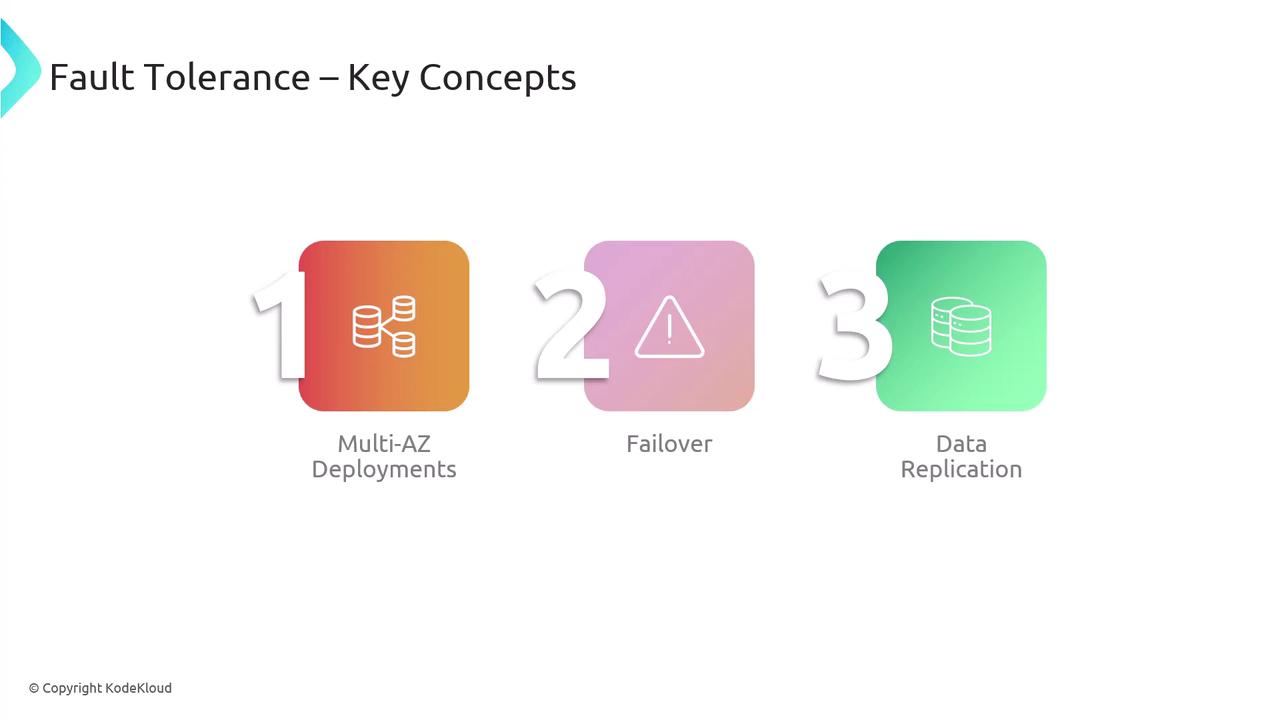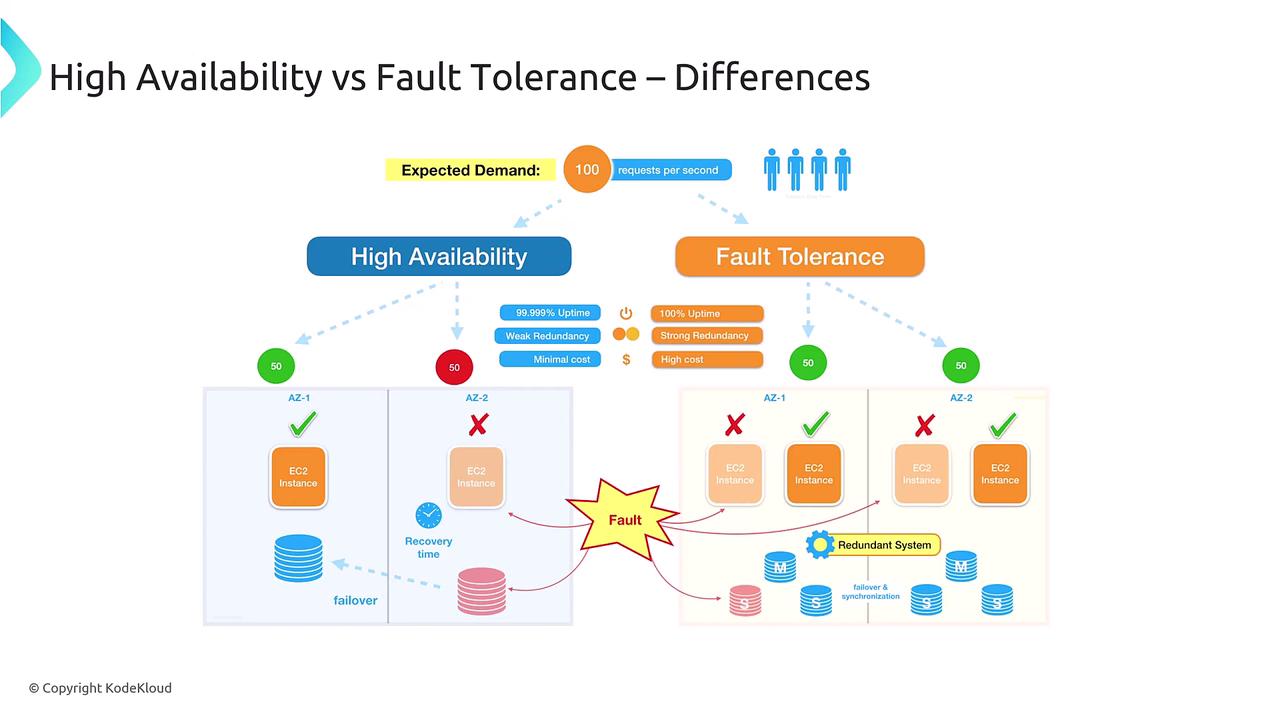AWS Certified SysOps Administrator - Associate
Domain 2 Reliability and BCP
High Availability and Fault Tolerance in AWS Introduction
Welcome to this lesson where we delve into high availability (HA) and fault tolerance in AWS—core concepts essential for achieving the AWS SysOps certification. This guide explains how AWS architectures ensure your applications remain robust, scalable, and resilient.
Consider a typical scenario where application clients access a website via a URL. The incoming traffic first reaches a load balancer, which then distributes requests across multiple servers. This setup is especially critical during high-traffic events like Black Friday or Cyber Monday, where millions of users might simultaneously interact with your system.

Designing for High Availability
High availability hinges on redundancy and load balancing. The use of multiple servers allows your system to scale dynamically during peak traffic periods. In AWS, an Elastic Load Balancer (ELB) abstracts the details of the underlying servers, ensuring end users experience a seamless connection. Unlike physical appliances, ELBs exist as virtual network devices that scale automatically.
Several AWS services enhance high availability, including:
- Amazon Route 53: Provides global traffic management.
- Amazon RDS: Supports multi-Availability Zone (AZ) deployments.
These services work together to minimize downtime by intelligently distributing traffic and resources amidst failures.
![]()
Fault Tolerance Explained
Fault tolerance ensures that your system continues to operate even when one or more components fail. In a fault-tolerant design, failures are either rapidly recovered from or mitigated through redundancy, ensuring minimal disruption in service.
Key Mechanisms for Fault Tolerance
- Multi-AZ deployments with automatic failover.
- Database replication (across S3, RDS, Aurora, or DynamoDB) to maintain continuous operation.
For global websites, fault tolerance may require additional services like DNS failover and AWS Global Accelerator to handle failures efficiently. AWS leverages services such as DynamoDB, S3, and auto-scaled EC2 instances to support fault-tolerant architectures. Aurora, with its primary-replica configuration, is another prime example of achieving strong fault tolerance by replicating data across multiple nodes.


![]()
Comparing High Availability and Fault Tolerance
Although both high availability and fault tolerance strive for continuous operation, they differ significantly in their approach:
| Approach | Key Focus | Example Scenario | Cost Consideration |
|---|---|---|---|
| High Availability | Minimizing downtime with minimal recovery lag | A server failure triggers a quick failover resulting in a short interruption | Lower due to less redundancy |
| Fault Tolerance | Eliminating downtime through immediate failover | Active-active configuration where redundant components instantly take over | Higher due to full replication |
In a high availability setup, if a failure occurs—such as in one Availability Zone (AZ2)—a failover occurs with a brief recovery period before traffic is rerouted to a healthy AZ (like AZ1). Conversely, a fault-tolerant architecture immediately compensates for any component failure, ensuring uninterrupted service.

Summary
In summary, high availability involves designing systems with redundant resources to minimize downtime during failures, while fault tolerance goes a step further to ensure continuous operation even when components fail. AWS implements these concepts using a variety of services such as Elastic Load Balancing, Route 53, multi-AZ RDS deployments, and several serverless options.
Certification Insight
Both high availability and fault tolerance are integral to building robust and scalable AWS architectures, making them crucial topics for those preparing for the AWS SysOps certification.
Thank you for reading this lesson. We look forward to exploring more advanced AWS concepts in our next session.
For more AWS resources, refer to the AWS Documentation.
Watch Video
Watch video content